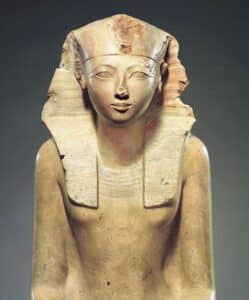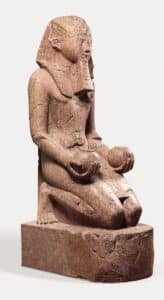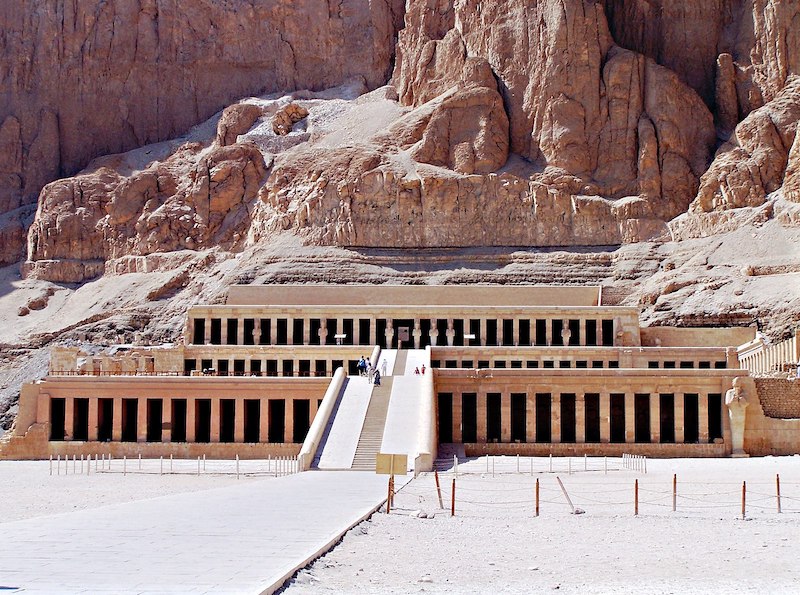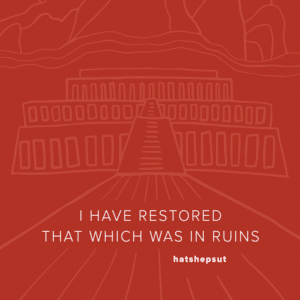It’s time for #SLOCAsomebodies! We’re back with a female pharaoh you may or may not have heard of: HATSHEPSUT.

Little is known about the personality of Hatshepsut, but what is known is that she was a powerful ruler in Egypt around the 15th century BC. In fact, she was the third woman to become pharaoh in 3,000 years of Egyptian history and the first to get the full power of the position. Her power was similar to that of the famous Cleopatra, who ruled 14 centuries later.
Hatshepsut was born to Thutmose I and his queen, Ahmes, but at 12 years old, Hatshepsut’s father died and she married her half-brother Thutmose II (son of her father and one of his secondary wives). When her husband died young and left no legitimate sons as heir, Hatshepsut began acting as regent for Thutmose III, one of her husband’s children from another secondary wife.
Confused yet? Basically, what you need to know is that Hatshepsut’s family was royal, and she ended up as acting ruler until one of her stepsons came of age. After several years, however, Hatshepsut came to assume the full title and powers of a pharaoh herself, becoming full co-ruler with Thutmose III. This was unprecedented, and we aren’t quite sure why she made this move. Scholars have long thought she was merely fueled by political ambition, but more recent Egyptologists have suggested that she might have taken up the throne due to a political crisis, such as a threat from another branch of the royal family, in order to save the throne for her stepson.
Whatever her intentions, Hatshepsut fought to defend her legitimacy, constantly pointing back to her royal lineage and claiming that her father had actually appointed her as his successor. She also rebranded and often ordered that she be portrayed as a male pharaoh with a beard.

Hatshepsut also took on ambitious building projects; her greatest achievement was the huge temple at Deir el-Bahri, considered one of the wonders of ancient Egypt.


Our illustration and quotation for today is from this great temple, written in the voice of the queen, from the temple grounds.She was buried in the hills behind Deir el-Bahri in the Valley of the Kings (also the resting place of King Tut).
Though some argue that Thutmose III’s reign was saved by Hatshepsut, the new pharaoh did much to erase the legacy of his stepmother. Late in his reign, Thutmose III had almost all the evidence of Hatshepsut’s rule (including images of her as king on temples and monuments she had built) destroyed or vandalized. This was possibly to erase her example as a powerful female ruler or to delegitimize any future female descendants’ claim to the throne. Scholars knew little of her existence until 1822, and her mummified remains weren’t discovered until 2007.
Though this queen-king was almost lost to history, her current legacy as a powerful female ruler in the ancient times stands strong. Though the odds may have been against her, she ended up ruling a large empire for many years and contributed to the culture through architecture. Her words here, inscribed on her greatest building project, are meant to remind us that, like Hatshepsut did, we can always play a part in the restoration of old or forgotten things—whether that means creating beautiful buildings in a struggling empire or finding beauty in the midst of a hard homeschool day.
Remember, our Somebodies series is meant to present big ideas and important people in bite-sized, inspirational form, so don’t forget to download today’s free phone wallpaper below or on our Instagram! And look for our next Somebody coming soon!




















